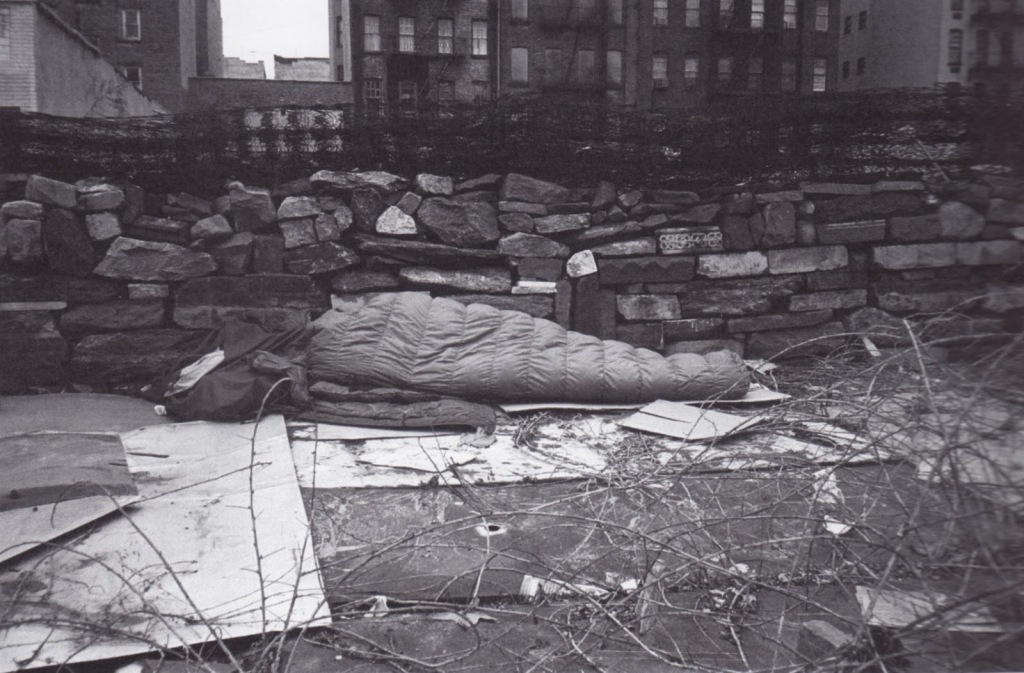While the last post was a deep dive into texts and the condition – this post is a look at Design Projects that have dealt with Homelessness. The understanding of of the condition is necessarily opportunistic – to realize a project. So the meaning accords with ‘the absence of home’ – and the person in this narrative is an idealized individual – you will find that there is not much depth in the construction of persona. Therefore for the current engagement and focus upon the ‘youth’ these projects are not very helpful. The LEARNING for design students here is in the clarity with which you can see that ‘normal design’ projects differ from social impact design projects.
For example the normal in design is focussed upon consumption and thus upon treating the people impacted by the design as this heterogeneous melange that can still be targeted with specific solutions. And this works in tech or materially embodied constructions – i.e. anyone can stand underneath a shelter and be protected from the rain.
More importantly it will be unusual to expect a design project that focusses upon providing a digital health record for this category of people.
I am therefore posting some projects – as the problem that design has in its inability to ‘disrupt’ mainstream ways of thinking.
How Might We Design Out Homelessness?
Raffaele identified two major factors affecting homelessness–not enough accommodation and not enough capital to support services to the multi-disadvantaged. He believes systems design is the best way to address these issues and looked to nature through biomimicry to come up with potential solutions.
http://designonline.org.au/how-might-we-design-out-homelessness/
Defensive architecture: designing the homeless out of cities
On any one night in London, there around 700 people sleeping in the city’s streets. Rough sleeping is a risky decision – and almost always the choice of the most desperate. Yet the response of the state – and our society – is surprisingly hostile.
Rough sleeping – and homelessness more generally – are on the rise. But austerity measures have made things worse, by cutting funds to vital support services. On top of this, rough sleepers have good reason to fear abusive behaviour from passers-by. Shockingly, this has even included physical attacks, resulting in documented deaths.
http://theconversation.com/defensive-architecture-designing-the-homeless-out-of-cities-52399
Design Resources for Homelessness
Design Resources for Homelessness is a knowledge resource that shares information about practical research, best practices and related content on the design of environments for persons that are homeless. It addresses emergency, transitional and permanent supportive housing types, housing first projects, and also day centers, clinics, and service outreach facilities. It is a non-profit initiative funded by donations and grants. Its information is provided without charge.
http://designresourcesforhomelessness.org/
Making Space for the Homeless
On a recent afternoon, at Parsons School of Design, on Thirteenth Street, the artist and interior designer Kevin Walz greeted a handful of guests in a large, long studio space that had high, old-fashioned embossed-metal ceilings and work spaces crowded with scraps and tools and models. He wore a shirt sewn to look like two layered button-up shirts, each with a different stripe, and had a punkish smile and a knot of gray hair perched above the closely shaved sides of his broad head. He offered people bottled water as they entered—Evian and Fiji—from a green plastic bodega bag.
Perhaps it’s fanciful to be discussing beautiful design in the face of horror stories about the city’s neglected, dilapidated shelters. Or perhaps the project of reconceptualizing what it means to house the homeless goes hand in hand with the project of finding sustainable approaches to homelessness. (In an area where the best practices seem wholly inadequate to the problem at hand, and where departures from orthodoxy—such as a Utah experiment that simply gave homeless people houses—can be notably fruitful, the idea of radical reconceptualization is particularly attractive.) But the ability to conceive of and implement beautiful design with scarce resources is a great test of skill and talent, and it’s worth wondering whether top-tier designers would even be interested in these tight-budget contracts. (“My passion still goes to high-end residential spaces,” which allow for extensive customization, one student said.) But from the working designer’s point of view, designing for a low-income demographic might offer another kind of freedom. Walz said that he’s observed a growing discontent among interior designers with some of the changes that economic trends have wrought on their profession. “Everybody has sort of had it with the sense of entitlement in certain parts of the population,” he said. “But nobody wants to talk about it—you don’t want to bite the hand that feeds you.”
http://www.newyorker.com/culture/culture-desk/making-space-for-the-homeless
Homelessness Is Bad Design
Homelessness is what happens when people fall through the cracks of different systems, so if we’re to put an end to it, we need to create integrated teams—the U.S. Department of Veterans Affairs, the mayor’s office, the nonprofits, the housing authority. It’s only when you get everyone together in the same room that you can construct a well-performing housing placement system that isn’t sending vulnerable people down all sorts of dead ends.
https://www.bloomberg.com/features/2016-design/a/rosanne-haggerty/
Housing for the Homeless: 14 Smart & Sensitive Solutions
City officials spend a lot of time and energy worrying about how to keep homeless people off public furniture and out of certain common areas, when they should be considering how to better manage the issue of homelessness in general. One area of focus is homeless housing, whether simply meeting the immediate needs of people who live on the streets or providing a more long-term, forward-thinking transitional living spaces. These 14 designs for homeless housing provoke thought as to how we can meet the needs of disadvantaged people living in our own communities, and ensure that the situation is only temporary.
weburbanist.com/2012/03/19/housing-for-the-homeless-14-smart-sensitive-solutions/




Leave a comment